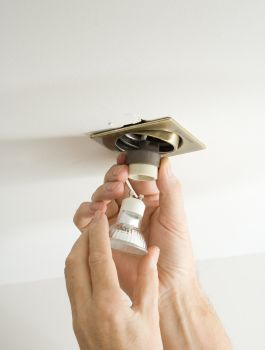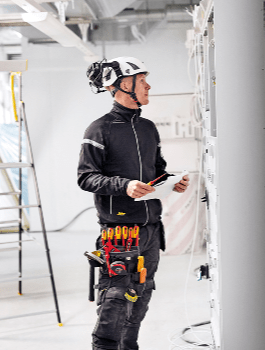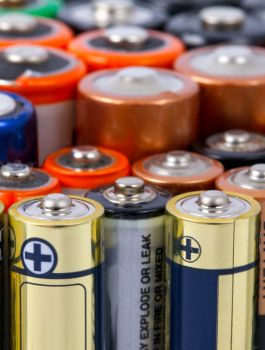Carbon Monoxide (CO) - The Facts
Carbon monoxide, also known as CO, is less dense than air and, unfortunately, colourless, tasteless and odourless. It's highly dangerous and poisonous.
Carbon Monoxide tends to accumulate in greater amounts in proportion to the number of people within a house and the highest levels of the gas are most likely to be found where people within the property spend most of their time.
When appliances are in good working order, the chances of a carbon monoxide leak are minimal, it’s when appliances don’t work properly that the issues come, potentially creating significantly higher levels of CO than is safe.
Another thing to be conscious of is being careful when using charcoal grills or kerosene heaters in the house, or even having your car’s engine running in a garage connected to the house. All of these could result in high enough levels of CO to cause carbon monoxide poisoning.
Products where you are more than likely to find carbon monoxide:
- Fireplaces
- Wood burning stoves
- Cooking Ranges
- Charcoal grills
- Furnaces
- Room heaters
- Cars running in sealed garages
- Water heaters
- Portable generators
Being in close proximity to devices containing CO always carry the risk of carbon monoxide poisoning. People particularly at risk are unborn babies, small children, those suffering from anaemia and anyone with heart problems.
Low levels of carbon monoxide may cause tiredness as well as chest discomfort for those with heart disease.
The negative effects of CO won’t always be felt immediately. Initially, symptoms feel very Flu-like (but without a temperature). It may also take on the signs of other ailments - stomach flu or abdominal pains.
Warning symptoms:
- Breathing Irregularly
- Dizziness
- Tiredness
- Headache
- Nausea
So what are the safe levels of CO?
How Do I Prevent Carbon Monoxide Poisoning?
It is vitally important to have your gas appliances routinely checked. Having your products tested on a regular basis helps prevent leaks and, subsequently, the release of CO.
Homeowners need to ensure that the appliances are checked and maintained yearly by a specialist.
Landlords must have the gas appliances within their properties serviced annually by an authorised professional.
Fitting:
- It is essential to have combustible appliances installed properly. New appliances should always include installation instructions, which you should follow exactly as well ensuring that you adhere to local building codes.
- Appliances that need ventilation generally need to be vented correctly and according to the manufacturer's guidelines.
- With any combustible product, it's always advisable to have a registered technician install it for you.
Appliance Maintenance:
- A certified expert needs to perform routine service on houses with central heating and also heating home appliances (like gas dryers and hot water heaters) every year.
- Experts will check the electrical along with mechanical components of home appliances, e.g temperature controls, and automatic safety devices.
- Flues as well as chimneys should be clear of all blockages and checked for corrosion and loose connections.
- Each and every item must be regularly serviced.
- Gas or kerosene space heaters should always be kept clean and well-serviced to keep them in excellent working order.
Use of Appliances:
- At all times keep within the manufacturer’s instructions for safe operation.
- In the case of an unvented gas or even kerosene heater in a particular room, make certain that room itself offers good ventilation.
- Do not have an unvented heater operating during the night or in bedrooms.
- Do not have charcoal grills inside your home, tent or a sealed garage.
- Do not leave cars running in a sealed garage, even if it's just to warm the vehicle up in winter.
Inspecting your Appliances:
In addition to professional servicing on appliances that have the potential to generate CO, routine home inspections should be done keep an eye out for signs of potential CO problems. From the checklist below, if you find anything unusual make sure you get in a professional:
- Water streak/rust on air vents and also chimneys
- Loose or missing sections within the furnace
- Soot within the home, on surfaces and in the attic
- Chimney or vent connections that have become loose or even disconnected
- Debris or even soot dropping out of your chimney, fireplace, or home appliance
- Look for loosened masonry coming off your chimney
You may find indications too that appliances are not getting used correctly, these include;
- The availability of warm water quickly dropping off
- A furnace not heating the house completely or continuously running
- Look for soot, particularly on your appliances
- Is there possibly an odd odour or, even worse, a burning smell?
- A build-up of moisture or condensation on the insides of windows.
Carbon Monoxide Sensors 
The initial line of defence is always to take all the necessary steps to avoid carbon monoxide at all costs. After that, the next step is to buy a carbon monoxide detector which recognises harmful levels of CO which triggers an alarm.
How exactly does the carbon monoxide detector function?
The alarm is triggered any time CO levels go up to unacceptable levels. There are lots of models out there each with different features and individual options. There are several that produce noise, even with the presence of lower levels of carbon monoxide, others sound the alarm only once it reaches dangerous amounts.
There are several carbon monoxide sensors which are very reactive, so they detect the presence of CO fairly quickly. Many sensors produce lower levels of sound even at times where the risk is small.
Where do I install my CO alarm?
Carbon monoxide distributes quickly and evenly all through the house so, ideally, you'd put CO alarms in the sleeping area of the house, it's also advisable to install one in the living area where people spend the majority of their time.
Be careful not put your detector anywhere near chemicals in the house, it could damage the detector or even set it off. Putting it on a wall or ceiling is a good idea, but make sure you read the instructions and follow them.
If you've wired the sensor into your electrical system directly ensure you test it monthly. If it is battery powered a weekly test is advisable and be sure to change batteries on an annual basis.

 Hate
Hate
 Dislike
Dislike
 Neutral
Neutral
 Like
Like
 Love
Love





















